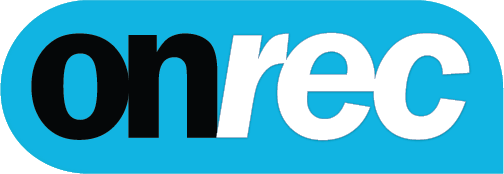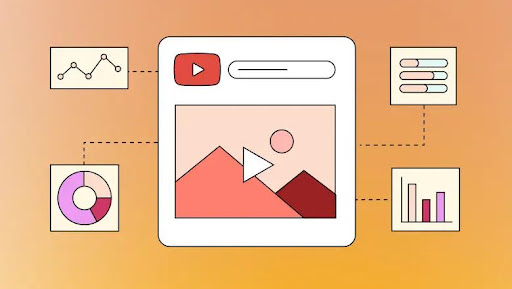YouTube has become the go-to platform for learning new skills, researching products, and discovering solutions. For SaaS companies, this shift represents a massive opportunity.
While most businesses still focus on traditional channels, such as paid ads and email marketing, smart SaaS brands are building entire growth engines on YouTube. They're turning complex software into simple tutorials, abstract features into clear demos, and faceless companies into trusted authorities.
This post breaks down exactly how they're doing it. You'll see the specific strategies that work, real examples from successful SaaS brands, and actionable steps you can implement today.
Why YouTube Matters for SaaS Growth
YouTube processes over 3 billion searches every month, making it the second-largest search engine after Google. However, what makes it perfect for SaaS is that people don't just search for entertainment—they search for solutions.
When someone types "how to track website rankings" or "best project management software," they're not browsing. They're actively looking for tools to solve real problems. That puts them much closer to making a purchase decision than someone scrolling through social media.
The numbers back this up. According to Google's research, 90% of people discover new brands or products on YouTube. More importantly for SaaS companies, 68% of YouTube users watched videos to help with a purchase decision.
Video also solves a unique problem for SaaS companies: explaining complex products. A 2-minute screen recording can show exactly how your software works better than any landing page or feature list. This is why software demos consistently rank among the most-watched business content on YouTube.
Key Ways SaaS Brands Are Using YouTube
Educational Content
The most successful SaaS brands on YouTube focus on education first, selling second. They create tutorials, how-to videos, and product walkthroughs that solve real problems for their target audience.
(source)
Take HubSpot's approach. They don't just explain their CRM features—they teach marketing concepts. Their "Marketing 101" series covers topics like lead generation, email marketing, and conversion optimization. These videos rank high for broad marketing terms and introduce HubSpot as a trusted expert.
The strategy works because it builds authority. When viewers learn valuable skills from your content, they associate your brand with expertise. This increases the chances they'll choose your product when they're ready to purchase.
Here are the most effective educational formats for SaaS:
- Product tutorials - Step-by-step guides showing how to use your software
- Industry how-tos - Broader tutorials related to your niche (not just your product)
- Best practices - Strategy videos that establish thought leadership
- Problem-solving - Videos addressing common customer pain points
- Repurposed webinar clips - Breaking down longer webinar sessions into focused YouTube videos, social snippets, and blog content to maximize reach without additional production
Storytelling & Brand Personality
SaaS products can feel abstract and impersonal. YouTube lets you change that by showing the people behind the product and the real impact it has on customers.
(source)
Notion does this exceptionally well. Their channel includes behind-the-scenes content showing how their team uses Notion internally. They feature customer stories where real users explain how Notion changed their workflows. This transforms Notion from "productivity software" into a tool that real people love and depend on.
Customer story videos are particularly powerful because they provide social proof while showing practical use cases. Instead of just listing features, you're showing how those features solve real problems for real people.
Community Building
YouTube's comment system and community features make it perfect for building engaged audiences.
(source)
Smart SaaS brands use this to create ongoing relationships with potential customers - and many are taking those relationships further by building dedicated paid communities on platforms like Whop, where they can offer exclusive content, direct support, and deeper engagement
Regular Q&A sessions work especially well. You can answer common questions about your industry, address customer concerns, and provide personalized advice. This builds trust and positions your team as approachable experts.
Live streams and webinars also drive engagement. Tools like StreamYard make it easy to host professional-looking live sessions directly on YouTube. As your video tech stack grows, explore platforms like Join Secret to access discounted rates on streaming, editing, and analytics tools—helping you scale content production without scaling costs proportionally.
SEO & Discoverability
YouTube videos often rank in Google search results, giving you two chances to capture the same search query. This is particularly valuable for SaaS companies targeting niche keywords.
(source)
Ahrefs demonstrates this perfectly. Their YouTube videos consistently rank for SEO-related search terms both on YouTube and in Google.
When someone searches "how to do keyword research," they're likely to find Ahrefs content in both places.
The key is targeting keywords your ideal customers actually search for. Use tools like YouTube's autocomplete feature or Keywords Everywhere to find relevant search terms. Then create videos that directly address those searches.
Conversion-Oriented Content
While education builds trust, you still need content that drives conversions. The most effective approach is creating videos for people already considering your type of solution.
(source)
Product comparison videos work extremely well for this. Use an AI agent to create honest comparisons between your tool and competitors, focusing on specific use cases and feature differences.
These videos capture high-intent searches like "[your competitor] vs [your tool]" or "best alternative to [competitor]."
Free trial promotions also convert well when placed strategically. Include clear calls-to-action in videos where viewers are learning about features they can try themselves. For businesses looking to maintain their customer base, it's essential to explore various strategies to reduce subscription churn and ensure sustained growth.
Case Studies of Successful SaaS YouTube Channels
1. HubSpot: Education-First Growth
HubSpot has built one of the most successful SaaS YouTube channels by focusing entirely on education. Their approach is simple: teach marketing and sales concepts without constantly pushing their product.
Their "SEO Success Strategies" playlist has over 1 million views because it covers fundamental topics every SEO needs to understand. Videos like "What is Lead Generation?" rank high for broad search terms and introduce HubSpot to people who might not have heard of it.
The results speak for themselves. HubSpot's YouTube channel generates substantial traffic to their website, and many viewers ultimately sign up for their free tools or paid products after learning from their content.
Key takeaway: Build authority by teaching your field, not just explaining your product.
2. Notion: Community-Driven Content
Notion's YouTube strategy places a strong emphasis on community. They feature real users showing how they organize their lives and work with Notion. This creates a library of practical examples that work better than any marketing campaign.
Their "Notion for Students" series shows college students actually using Notion for notes, project planning, and goal tracking. These videos feel authentic because they feature real use cases from actual users.
Notion also creates template tutorials where they build useful Notion workspaces on camera. Viewers can follow along and create the same setup in their own accounts. This gives people immediate value while demonstrating Notion's capabilities.
Key takeaway: Show real people using your product in real situations.
3. Ahrefs: SEO-Driven Educational Content
Ahrefs has mastered the art of creating educational content that indirectly promotes their tool. Their videos teach SEO concepts while naturally showcasing Ahrefs features as the solution.
A video titled "How to Find Low Competition Keywords" teaches a valuable skill while demonstrating Ahrefs' keyword research tools. Viewers learn something useful whether they buy Ahrefs or not, but they also see exactly how Ahrefs would help them implement what they learned.
This approach has helped Ahrefs rank for hundreds of SEO-related keywords on YouTube. Their channel drives substantial traffic to their website and generates trial signups from viewers who want to try the techniques they learned.
Key takeaway: Create content that teaches valuable skills while naturally showcasing your product as the solution.
Best Practices for SaaS Brands on YouTube
1. Focus on Value Before Selling
The biggest mistake SaaS brands make on YouTube is creating content that feels like extended advertisements. Successful channels prioritize helping viewers over promoting products.
Follow the 80/20 rule: 80% of your content should provide value without mentioning your product, 20% can be directly promotional. This builds trust and makes viewers more receptive when you do promote your tool.
2. Maintain Consistent Publishing
YouTube rewards channels that post regularly. Pick a schedule you can maintain long-term, whether that's weekly, bi-weekly, or monthly. Consistency matters more than frequency.
Create a content calendar with video ideas planned at least a month ahead. This prevents last-minute scrambling and ensures you always have something ready to publish.
3. Invest in Quality Production
You don't need expensive equipment, but your videos should look and sound professional. Poor audio quality will drive viewers away faster than any other factor.
Start with these basics:
- Clear audio (invest in a decent microphone)
- Good lighting (natural light or a simple ring light)
- Stable video (use a tripod or stable surface)
- Clean screen recordings (use tools like Loom or Camtasia)
For more insight into creating professional footage, see this guide to high-quality event video production.
4. Optimize for Discovery
YouTube success depends on people finding your videos. Optimize every element for search and recommendations:
- Titles: Include target keywords while staying compelling and clickable
- Descriptions: Write detailed descriptions with relevant keywords and links
- Thumbnails: Create eye-catching thumbnails that clearly show what the video covers
- Tags: Use relevant tags, but don't overdo it
- End screens: Promote related videos to keep viewers on your channel
5. Track the Right Metrics
YouTube Analytics provides detailed data, but focuses on metrics that matter for business growth:
- Watch time: How long people actually watch your videos
- Click-through rate: How often people click when they see your thumbnail
- Traffic to website: Visitors coming from YouTube to your site
- Conversion rate: How many YouTube visitors sign up for trials or demos
- Incrementality: Similar to incrementality testing in advertising, this measures the true impact of your YouTube content on conversions — helping you understand which videos actually drive additional sign-ups beyond what would have happened naturally.
The Future of YouTube for SaaS
Short-Form Video Growth
YouTube Shorts are gaining massive traction, especially among younger audiences. For SaaS brands, this creates opportunities to share quick tips, feature highlights, and bite-sized tutorials.
The key is adapting your content for mobile-first viewing. Focus on single concepts that can be explained in under 60 seconds.
AI-Driven Personalization
YouTube's recommendation algorithm is becoming more sophisticated at matching content to viewer interests. This means well-optimized SaaS content has a better chance of reaching relevant audiences. To enhance your strategy, consider how to integrate AI tools that analyze viewer behavior and preferences.
Focus on creating content for specific user segments rather than broad audiences. Videos targeting "project managers using Slack alternatives" will reach more qualified viewers than generic productivity content.
Influencer Partnerships
More SaaS brands are partnering with industry influencers and thought leaders for co-created content. This provides access to established audiences and adds credibility through association.
Look for influencers who already create content in your niche. Propose collaboration ideas that provide value to their audience while showcasing your expertise. Tools like ReferralCandy can assist with this by rewarding influencers and affiliates for every referral or conversion they generate.
Wrapping It Up
YouTube represents one of the biggest growth opportunities for SaaS brands today. While your competitors focus on paid advertising and cold outreach, you can build a sustainable source of organic traffic and qualified leads.
The brands winning on YouTube aren't just creating better content—they're building relationships with their audience. They teach valuable skills, solve real problems, and establish themselves as trusted experts in their field.
Your first step is simple: pick one pain point your ideal customers face and create a 5-minute video showing how to solve it. Don't mention your product unless it's directly relevant to the solution.
Upload that video with an optimized title and description. Then commit to publishing one video per week for the next three months.
By month four, you'll understand what resonates with your audience and have real data to guide your strategy. More importantly, you'll have taken the first step toward building a growth channel that compounds over time.
Start planning your first SaaS YouTube series today. Your future customers are already searching for the solutions you can provide.
FAQs
1. Why are SaaS brands investing in YouTube marketing?
Ans: YouTube is where potential users actively search for tutorials, comparisons, and problem-solving videos. SaaS brands use it to educate, build trust, and show their product in action — turning viewers into trial users faster than display ads or blog posts.
2. What type of videos work best for SaaS companies?
Ans: Tutorials, feature explainers, customer success stories, and product comparison videos perform best. The key is to show how your software solves real problems, not just talk about features.
3. How can YouTube help generate leads for a SaaS business?
Ans: Smart brands include CTAs that guide viewers to free trials, demos, or gated resources. Pairing YouTube videos with retargeting ads and UTM tracking helps convert engaged viewers into qualified leads.
4. Should SaaS brands focus on organic YouTube content or paid ads?
Ans: Both. Organic builds long-term authority and SEO value, while paid YouTube video ads amplify reach quickly. Many brands start organic, then use paid ads to scale high-performing videos.
5. How do SaaS brands measure YouTube success?
Ans: By tracking metrics that tie to real growth — watch time, click-through rate, demo sign-ups, and customer acquisition cost from video campaigns. Vanity metrics like views matter less than conversions and retention impact.
About the Author:
Jyoti Ray, founder of OneMinuteSEO, brings 7+ years of SEO expertise to help SaaS businesses earn high-quality backlinks that drive rankings and authority. As the go-to link-building expert in the SaaS industry, he delivers results that matter. Connect with him on LinkedIn.






